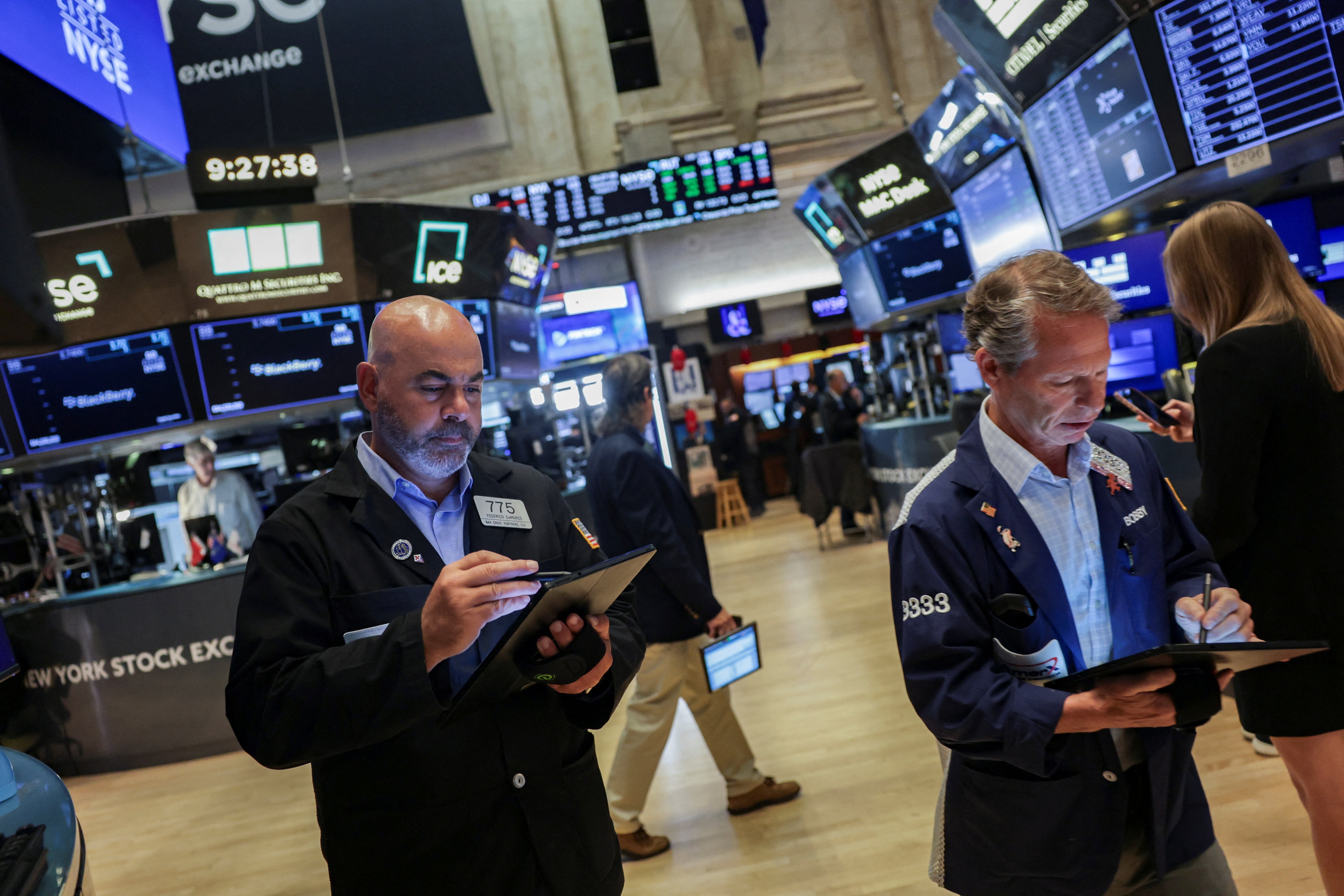How will a US rate rise affect emerging economies?
Stay up to date:
United States
This article is published in collaboration with IMF Direct.
With the expected move by the Federal Reserve to raise interest rates before the end of the year, many are asking about the effects on emerging market countries. Will outflows increase, and how will this affect economic activity in emerging markets? To answer that, we need to know if capital inflows are in general expansionary or contractionary.
One would think that the question was settled long ago. But, in fact, it is not. It is a case where theory suggests one thing and practice another. The workhorse model of international macro (the Mundell-Fleming model), for example, suggests that, for a given monetary policy rate, inflows lead to an appreciation, and thus to a contraction in net exports—and a decrease in output. Only if the policy rate is decreased sufficiently can capital inflows be expansionary. Symmetrically, using a model along these lines, Paul Krugman argued in his 2013 Mundell-Fleming lecture that capital outflows are expansionary.
Emerging-market policy makers, however, have a completely different view. They see capital inflows as leading to increases in credit and output unless they are offset by anincrease in the policy rate. The evidence appears to support the perception of policy makers. In the typical emerging market case, capital inflows appear to be associated with currency appreciations, credit booms, and output increases (Ostry et al., 2012a).
What is true in practice can also be true in a model
How can we reconcile the models and reality? The answer we offer in some recent work relies on extending the set of assets in the economic model, by allowing for both “bonds” (the rate on which can be thought of as the policy rate) and “non-bonds,” i.e., assets such as equities and bank liabilities which are imperfect substitutes for bonds. In this case, even if the policy rate—which we take to be the rate on bonds—is given, capital inflows may decrease the rate on non-bonds and reduce the cost of financial intermediation. The positive effect of these lower rates on domestic demand may then offset the adverse effects of currency appreciation on external demand. Capital inflows may in this case be expansionary even for a given policy rate. There is thus a tentative reconciliation between the Mundell-Fleming model and policy makers’ views.
The role of foreign exchange market intervention
The appropriate policies vis-à-vis capital inflows depend very much on the nature of the inflows. Sterilized foreign exchange (FX) market intervention, if done through bonds (as is usually the case), can fully offset the effects of bond inflows, leaving both the exchange rate and interest rates unchanged. In effect, the central bank takes the opposite position of foreigners: as foreigners decrease their holdings of foreign assets and increase their demand for domestic bonds, the central bank decreases its demand for domestic bonds and increases its holdings of foreign assets. When, however, sterilized foreign exchange intervention is used in response to non-bond inflows, it can avoid a currency appreciation (see Blanchard et al., 2015), but only at the cost of a larger decrease in the rate of return on non-bonds.
Capital controls
Targeted capital controls affect the mix of inflows. Capital controls on bond inflows reduce bond inflows, but increase the effects of non-bond inflows, both on the exchange rate and on the rate of return on non-bonds. If capital controls are instead targeted at non-bond flows, the effect of bond inflows on the exchange rate is magnified. In both cases, targeted capital controls reduce upward pressure on the currency which in turn increases the “spillover” effects from the non-targeted inflow on the exchange rate, the rate of return, or both.
Effects of monetary policy
What about the effects of monetary policy? The central bank might have one of two objectives (apart from its output/inflation mandate): stabilize the exchange rate or stabilize the rate of return on non-bonds (or put another way, limit credit expansion). If it targets the former, it will lower the policy rate, while if it targets the latter it will increase the policy rate. This is the form the “policy dilemma” takes in our framework, whether to stabilize the exchange rate and accept a larger decline in the rate on non-bonds, or stabilize the rate of return and accept a larger appreciation.
This is however a false dilemma, as a combination of instruments can avoid such a trade-off. Indeed, it is notable that monetary policy and foreign exchange intervention can together, in principle, offset the effect of inflows on both the exchange rate and the rate of return to non-bonds without a need for capital controls (see Ostry et al, 2012b). This is a more optimistic conclusion than the proposition of Rey (2013) viz. that, short of using macroprudential tools or capital controls, countries cannot divorce themselves from global financial flows.
Evidence broadly supports theory
An empirical exploration faces many challenges, including the fact that the theoretical arguments above relate to the effects of exogenous capital flows. This challenge requires the use of instruments, namely variables that affect inflows but are plausibly not caused by events within the country. In addition, countries to varying degrees make use of different policy tools to cancel the effects of the flows, something that must be controlled for in the empirical approach. With these caveats in mind, our empirical results are broadly supportive of the theory. We find that, while bond inflows have a negative effect on economic activity, non-bond inflows have a significant and positive effect. We also find that non-bond inflows (excluding FDI) have a strong positive effect on credit, much stronger than bond flows, highlighting the key channel we think is at play in the output effects of capital flows.
What this means
Theory suggests that, for a given policy rate, bond inflows lead to currency appreciation and are contractionary, while non-bond inflows lead to an appreciation but also to a decrease in the cost of borrowing, and thus may be expansionary. The empirical evidence is broadly supportive. Exogenous bond inflows appear to have on average small negative effects on output, while exogenous non-bond inflows appear to have a positive effect. Our analysis, if correct, has important implications for the use of policy tools to deal with inflows. Different combinations of tools must be used depending on the nature of the flows.
Publication does not imply endorsement of views by the World Economic Forum.
To keep up with the Agenda subscribe to our weekly newsletter.
Author: Olivier Blanchard is the Fred Bergsten Senior Fellow at the Peterson Institute and Robert Solow Professor of Economics Emeritus at MIT. Jonathan D. Ostry is Deputy Director of the IMF’s Research Department. Atish Rex Ghosh is Assistant Director, and Chief, Systemic Issues Division, in the Research Department of the International Monetary Fund. Marcos Chamon is a Deputy Division Chief in the Systemic Issues Division of the Research Department (RES) of the International Monetary Fund.
Image: The United States Federal Reserve Board building is shown behind security barriers in Washington. REUTERS/Gary Cameron.
Don't miss any update on this topic
Create a free account and access your personalized content collection with our latest publications and analyses.
License and Republishing
World Economic Forum articles may be republished in accordance with the Creative Commons Attribution-NonCommercial-NoDerivatives 4.0 International Public License, and in accordance with our Terms of Use.
The views expressed in this article are those of the author alone and not the World Economic Forum.
Related topics:
Forum Stories newsletter
Bringing you weekly curated insights and analysis on the global issues that matter.
More on Financial and Monetary SystemsSee all
Lim Chow-Kiat
August 21, 2025
Dalal Buhejji
August 14, 2025
Hallie Spear
August 13, 2025
Sandra Waliczek
August 8, 2025
Rebecca Geldard
August 7, 2025
Aurora Matteini and Derek Baraldi
August 6, 2025






